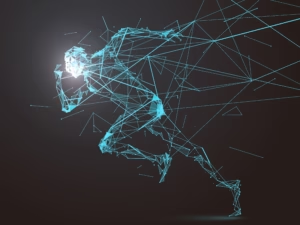Intensified Competition Among Major Tech Companies: What It Means for the Future of Tech
Introduction
The technology sector has always been fiercely competitive, but in recent years the battle among the world’s leading companies has intensified to an unprecedented level. Giants such as Apple, Google (Alphabet), Microsoft, Amazon, Meta, and newer players like OpenAI, Anthropic, and Nvidia are no longer competing in just one space. Instead, they are engaged in overlapping wars across artificial intelligence, cloud computing, hardware, digital ecosystems, and even global policy influence.
This competition is shaping the future of technology — driving rapid innovation, lowering prices in some areas, raising new ethical questions, and redefining how users interact with the digital world. At the same time, it is also creating risks: monopolistic tendencies, aggressive acquisitions, data privacy concerns, and geopolitical tensions.
In this article, we will explore the forces driving intensified competition among major tech companies, the key battlegrounds, the strategies being employed, and what the outcome could mean for businesses, consumers, and society at large.
Why Competition Has Intensified
1. AI as the New Gold Rush
Artificial intelligence has become the central driver of competition. Companies that once differentiated themselves through hardware, search engines, or social networks are now all vying to dominate AI models, platforms, and applications. The launch of OpenAI’s ChatGPT in late 2022 was a watershed moment, triggering rapid responses from Google, Microsoft, Amazon, Meta, and others.
AI is not just a product — it is a foundational technology that will shape the next decade of business, education, health, and entertainment. That makes the stakes higher than ever.
2. Convergence of Industries
Previously, competition was more siloed: Apple focused on hardware, Google on search and ads, Microsoft on enterprise software, and Amazon on e-commerce. Today, these boundaries have blurred. Apple is entering AI-driven services, Amazon is pushing into advertising, Microsoft is investing heavily in consumer-facing AI tools, and Google is expanding into hardware.
This convergence creates more direct clashes among the giants.
3. Geopolitical Pressures
The global race for technological supremacy is not just about markets but also national security. The U.S. and China are at the forefront, and tech companies are often caught in the crossfire. Sanctions, export controls, and state-level funding (e.g., China’s AI push or the U.S. CHIPS Act) are intensifying competition on a geopolitical scale.
4. Investor Pressure
With trillion-dollar valuations comes immense pressure to sustain growth. Tech companies must constantly find new revenue streams, expand market share, and out-innovate rivals to satisfy investors. This dynamic pushes them to take bold and sometimes risky steps.
Major Battlegrounds of Tech Competition
1. Artificial Intelligence (AI)
AI is the most contested battleground.
-
Microsoft vs. Google: Microsoft has integrated OpenAI’s technology into its products like Microsoft 365 and Bing, directly threatening Google’s dominance in search and productivity. Google, in turn, has launched Gemini and doubled down on AI in Workspace.
-
Meta vs. OpenAI/Anthropic: Meta is pursuing open-source AI models, while OpenAI and Anthropic are competing with more controlled, proprietary approaches.
-
Nvidia: While not a consumer-facing company, Nvidia holds enormous power as the leading supplier of GPUs essential for training AI models, giving it influence over all players.
The AI race is as much about ecosystem lock-in as it is about technology. Whoever builds the most powerful, useful, and trusted AI will shape entire industries.
2. Cloud Computing
Amazon Web Services (AWS), Microsoft Azure, and Google Cloud dominate this sector, but competition has intensified as enterprises increasingly demand AI-powered cloud services.
-
AWS leads in market share but faces pressure from Azure’s integration with OpenAI’s models.
-
Google Cloud is leveraging its AI expertise to carve out a niche in data and machine learning.
-
Smaller players like Oracle and IBM are also trying to stay relevant.
Cloud is not just a revenue generator — it is the backbone of the AI revolution.
3. Hardware and Devices
The smartphone era showed how hardware dominance could lead to ecosystem dominance. Today, hardware is again becoming central, but with new devices.
-
Apple: Pushing into mixed reality with the Vision Pro and investing heavily in custom chips.
-
Meta: Competing in AR/VR with Quest headsets.
-
Microsoft: Experimenting with AI-driven PCs.
-
Google: Expanding its Pixel line and custom Tensor chips.
Meanwhile, chipmakers like Nvidia, AMD, and Qualcomm are fiercely competing to supply the processors that power AI, gaming, and mobile experiences.
4. Social Media and Digital Ecosystems
Meta (Facebook, Instagram, WhatsApp), TikTok, YouTube (Google), and X (formerly Twitter) are in a constant battle for user attention. The integration of AI into social platforms — from personalized feeds to content creation — adds a new layer of competition.
5. Advertising
Google and Meta have long dominated online ads, but Amazon is now a rising giant in digital advertising, leveraging its e-commerce ecosystem. Apple, with its privacy-first changes, has also disrupted how advertising works, shifting the balance of power.
6. Regulation and Public Trust
Winning in tech is no longer just about technology; it’s also about navigating regulation and public trust. Companies are fighting to influence AI ethics, data privacy laws, and antitrust regulations. The outcome will determine who gets to operate freely and who faces restrictions.
Strategies Used by Major Tech Companies
1. Heavy Investment in R&D
Companies like Google, Microsoft, and Apple spend billions annually on research. These investments ensure they remain at the cutting edge and create barriers to entry for smaller competitors.
2. Strategic Partnerships and Acquisitions
Microsoft’s deep partnership with OpenAI, Amazon’s acquisition of Anthropic stakes, and Meta’s acquisitions in VR are examples of using partnerships to strengthen ecosystems.
3. Ecosystem Lock-In
Apple locks users into iOS and hardware, Microsoft into Office and Azure, and Google into Android and its services. AI is becoming the next layer of lock-in — with personal assistants and productivity bots creating long-term dependencies.
4. Open-Source vs Proprietary Approaches
Meta and Mistral are betting on open-source AI to build adoption and influence, while OpenAI, Anthropic, and Google are keeping models more closed to control monetization and safety.
5. Global Expansion
Tech giants are aggressively pursuing emerging markets like India, Africa, and Southeast Asia. These regions are critical for growth as Western markets become saturated.
Opportunities and Risks of Intensified Competition
Opportunities
-
Innovation Acceleration: Faster breakthroughs in AI, healthcare, education, and sustainability.
-
Consumer Benefits: More choices, better products, and potentially lower costs.
-
Economic Growth: Job creation in high-tech industries and new entrepreneurial opportunities.
Risks
-
Monopoly Power: Dominance by a few firms could stifle long-term innovation.
-
Privacy Concerns: Aggressive competition for data may weaken user privacy.
-
Ethical Dilemmas: AI misuse, algorithmic bias, and manipulation risks grow.
-
Geopolitical Conflicts: Companies caught between U.S.–China tensions may face disruptions.
The Future of Tech Competition
The next decade will see the competition intensify further, with AI at the center but not the only battlefield. Several trends are likely:
-
Rise of AI-first Devices: AI-powered smartphones, PCs, and wearables will become mainstream.
-
Industry Consolidation: Expect more acquisitions as companies try to eliminate rivals or absorb innovation.
-
Shift Toward Regulation: Governments worldwide will impose stricter rules on AI, data, and competition.
-
Global Power Balance: Chinese companies like Huawei, Baidu, and Tencent will continue to challenge U.S. dominance.
-
New Entrants: Startups like Mistral, Cohere, and others may disrupt the status quo, just as OpenAI did.
Conclusion
The intensified competition among major tech companies is more than just a corporate rivalry — it is a defining struggle that will shape the future of society, business, and even geopolitics. While the battles over AI, cloud, hardware, and digital ecosystems bring enormous opportunities for innovation and growth, they also raise critical risks around fairness, regulation, and long-term sustainability.
For consumers, the outcome will determine what tools we use, how our data is handled, and how much power a handful of corporations will hold over our digital lives. For governments and regulators, the challenge will be to balance innovation with responsibility.
In the end, this intensified competition could either usher in a new golden age of technology or consolidate power in ways that restrict choice and slow down progress. Much depends on how these companies, policymakers, and society as a whole navigate the battles ahead.
For quick updates, follow our whatsapp channel –https://whatsapp.com/channel/0029VbAabEC11ulGy0ZwRi3j
https://bitsofall.com/https-yourblog-com-microsoft-planned-shift-to-anthropics-ai/
https://bitsofall.com/https-yourblog-com-arms-new-mobile-chips-lumex-mali-g1-ultra-ai-on-your-phone/
Alibaba: Releasing the new Qwen model to improve AI transcription tools






